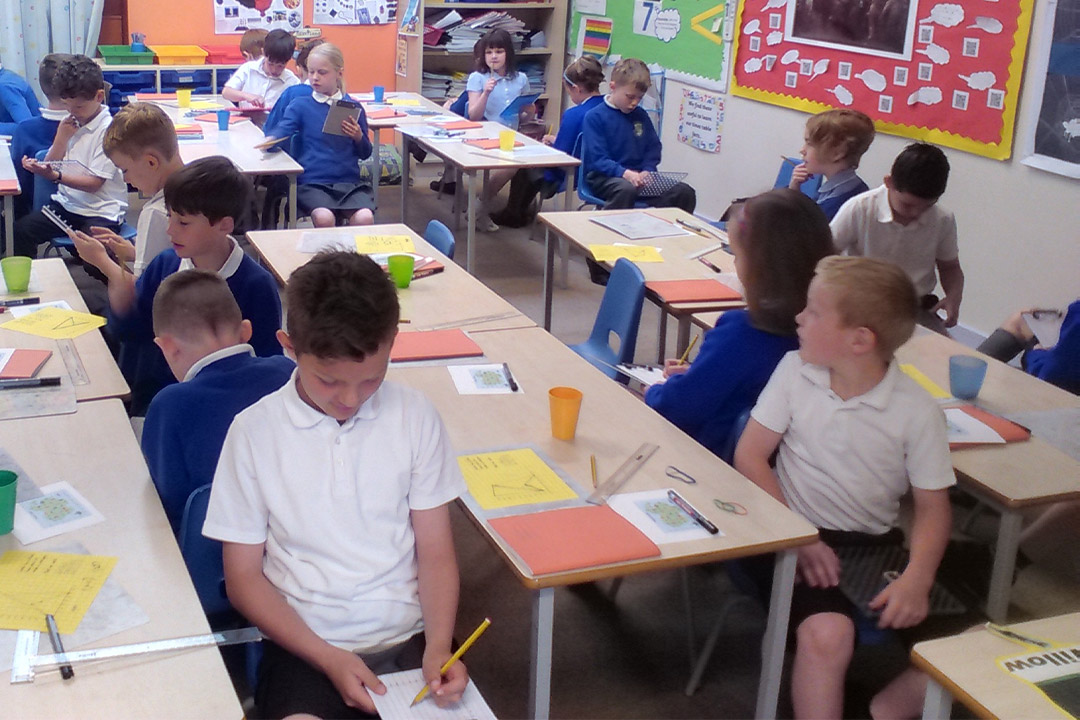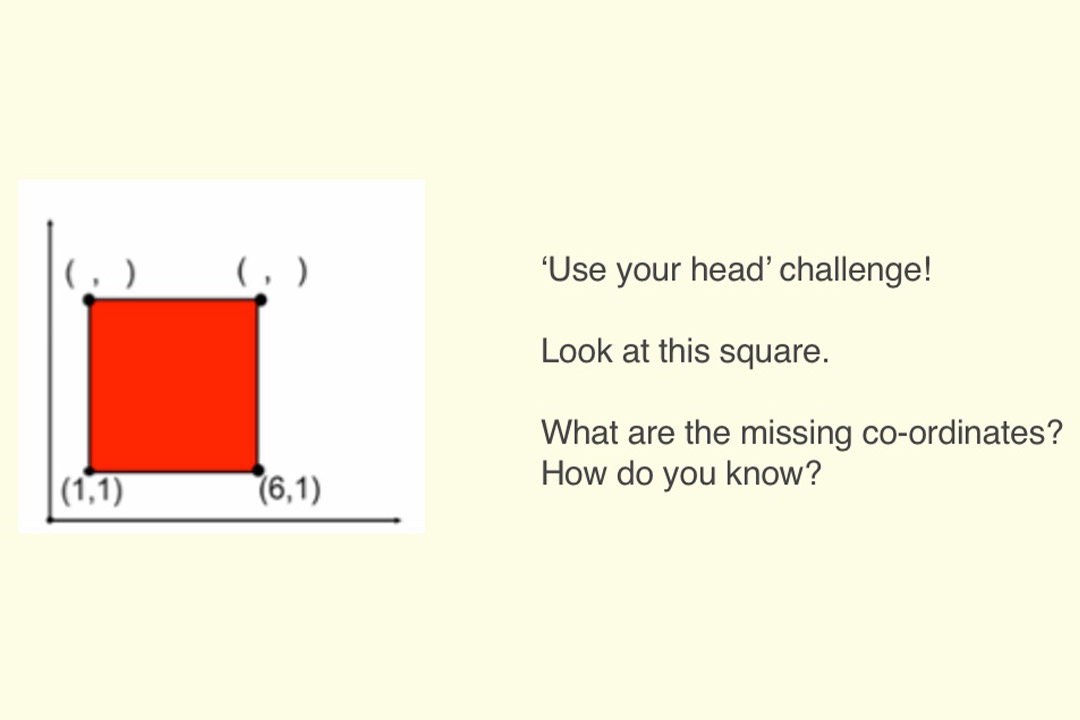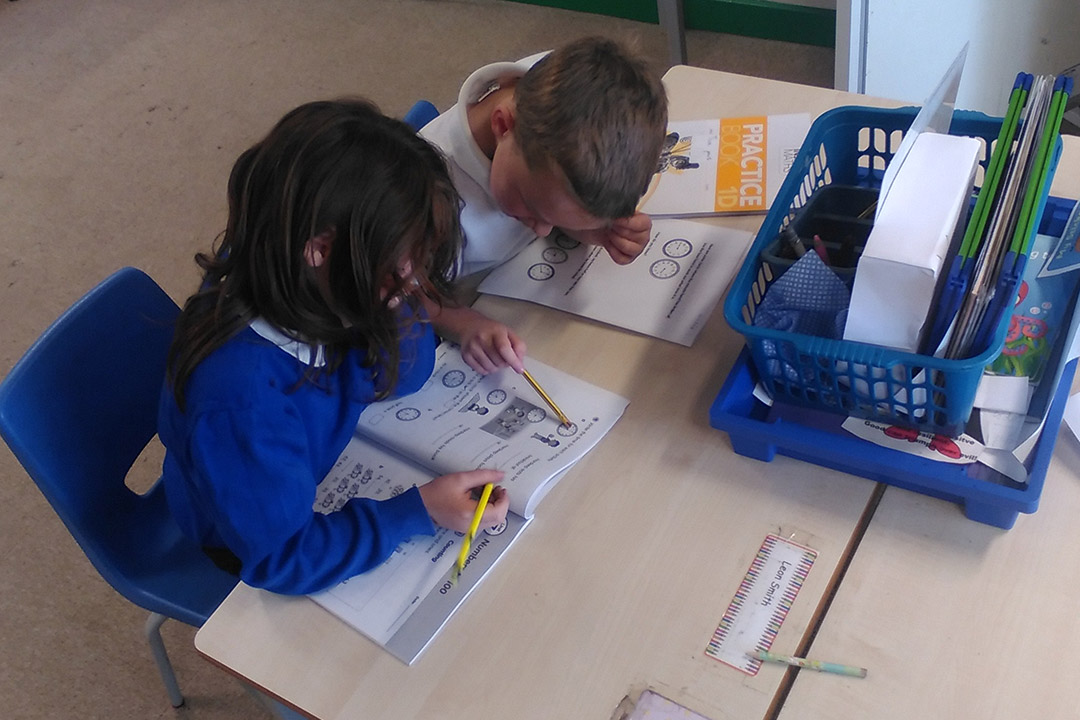Teaching for mastery: isn’t it just 'good teaching'?
Emma Patman, a Year 4 teacher, explains how her teaching has been transformed by her exposure to teaching for mastery pedagogy

Emma Patman, Maths Lead at Farnsfield St Michael’s Primary School in Nottinghamshire, is one of the many teachers nationwide whose classroom practice has been transformed by her exposure to teaching for mastery pedagogy. And yet she says:
“It’s just good teaching really. It’s all packaged up as something quite mystical and magical but it’s just common sense, a lot of it.”
Despite this, Emma (who has been teaching for 14 years) tells us that what is happening in her classroom, and what she sees in the classrooms of colleagues, looks and feels so different as to be revolutionary.
So what is it that makes the ‘teaching for mastery’ classroom feel and look so different?
When we visit Emma’s classroom, the children are arranged in rows facing forward, so all are involved in the constant ping-pong-style interaction between the teacher and pupils. The continuous switching between working individually, in pairs, and as a class responding to the teacher, can happen smoothly. Emma uses a couple of tricks that she picked up in Shanghai to alert the pupils to listen to her – a rhythmic clap from the teacher that the children echo, and a teacher call “1,2,3…”, to which the children respond “…eyes on you!” Whilst this is not an explicit component of the mastery approach, and not new to many classrooms, Emma points out how much more necessary it is to have such a tool because of the very short episodes of pupil work interspersed with teacher-led learning.
 Emma’s Year 4 class are learning about coordinates and Emma uses a series of five activities to embed understanding and address the particularly difficult points. In each of the activities, the emphasis is on talk – on explaining, describing and sharing understanding. The pace is quick but the steps are small – everyone is learning to describe points on a grid using co-ordinates, and find a point given its coordinate. Particular attention is paid to points that lie on the axes (where one of the coordinates is zero) after children found this difficult in a previous lesson. Depth of understanding is encouraged by cross-topic links with shape and space, when children describe and draw different polygons using coordinates at the vertices. To finish, Emma sets the class a ‘use your head’ challenge, involving finding the coordinates of two vertices of a square, given the coordinates of the other two vertices but no gridlines. Reasoning fully and independently through this problem appears really challenging for most pupils in the class. But they are ready to give it a go. There are many suggestions for ways to measure the side of the square. Emma carefully draws children away from these to reasoning the side-length. After some excellent and insightful contributions from others, a girl is able to offer an explanation, scaffolded by Emma and followed by many of her classmates.
Emma’s Year 4 class are learning about coordinates and Emma uses a series of five activities to embed understanding and address the particularly difficult points. In each of the activities, the emphasis is on talk – on explaining, describing and sharing understanding. The pace is quick but the steps are small – everyone is learning to describe points on a grid using co-ordinates, and find a point given its coordinate. Particular attention is paid to points that lie on the axes (where one of the coordinates is zero) after children found this difficult in a previous lesson. Depth of understanding is encouraged by cross-topic links with shape and space, when children describe and draw different polygons using coordinates at the vertices. To finish, Emma sets the class a ‘use your head’ challenge, involving finding the coordinates of two vertices of a square, given the coordinates of the other two vertices but no gridlines. Reasoning fully and independently through this problem appears really challenging for most pupils in the class. But they are ready to give it a go. There are many suggestions for ways to measure the side of the square. Emma carefully draws children away from these to reasoning the side-length. After some excellent and insightful contributions from others, a girl is able to offer an explanation, scaffolded by Emma and followed by many of her classmates.
What are the main features that create a lesson so radically different from what was being offered in Emma’s classroom before?
Small steps
Emma suggests that it is the small steps she takes. She recounts a story of teaching a lesson observed by Chinese teachers, in which she tackled perimeter. She felt she had broken down the concept into very small steps and yet the observers still commented that she had covered what would have been six lessons in China! To this end, she finds using a Singapore-style textbook an invaluable planning aid, to assist in giving her an idea of an appropriate pace.
Mathematical talk
Particularly notable when we visit is the prevalence of talk. Pupils sit with their ‘talk partner’ and are evidently very familiar with the instruction to talk/discuss/explain to each other. Where previously children sat in ability groupings, Emma now pairs children of differing attainment in the belief that this maximises the learning for both children. When children then share their ideas with the whole class, they have the confidence to feel that ‘this is our answer’ and therefore less exposing than ‘my answer’.
Another tactic Emma uses is to get children to ‘tell yourself’ by whispering their answer into their hands before discussing with their partner. When children offer explanations to the class, they are full and wordy rather than single word answers. The final challenging question (above) is tackled first by talking in pairs. This is followed by a lovely instance of a whole class answer, with contributions, scaffolded by Emma, coming from all corners of the classroom before a conclusion is reached.
 Emma uses a back-to-back talking method: pairs sit back-to-back and one gives the coordinates of the vertices of a shape. The partner plots the coordinates and gives the name of the shape. The lack of visual clues helps to develop the listening skills and the children enjoy the ‘game’ element of it.
Emma uses a back-to-back talking method: pairs sit back-to-back and one gives the coordinates of the vertices of a shape. The partner plots the coordinates and gives the name of the shape. The lack of visual clues helps to develop the listening skills and the children enjoy the ‘game’ element of it.
Children are also keen and confident to participate when Emma encourages them to come to the board and ‘be the teacher’. This is a method used frequently by Emma’s colleague Melissa Pearce who teaches Year 1/2.
Melissa has been involved in the Maths Hub textbook project, trialling Singapore-style textbooks (in this case ‘Inspire Maths’). In her class, Year 1s are learning to tell the time on the hours and half hours. Talk and verbal explanation are again pivotal to the children’s learning. When Melissa shows a time on the model clock she has, children are first expected to tell the time to their talk partner with an explanation, then she asks for the answer from an individual who gives not only “Half past ten…”, but “…because the minute hand is at the six and the hour hand is past the ten”. Melissa insists each answer is explained in a full sentence using precise mathematical language. Whilst such an approach might be seen as laborious, the benefits of pulling in children who might not understand where the answer came from seem clear.
 Melissa has been pleased with the confidence with which her Year 2s tackled the recent SATs papers but is even more optimistic for next year. Her current Year 1s will have experienced almost two years of teaching for mastery by then and she feels that even this year they could have had a good stab at the SATs questions.
Melissa has been pleased with the confidence with which her Year 2s tackled the recent SATs papers but is even more optimistic for next year. Her current Year 1s will have experienced almost two years of teaching for mastery by then and she feels that even this year they could have had a good stab at the SATs questions.
Teacher led
Emma describes the structural changes in her lessons since she adopted a mastery approach. Whereas previously most of the teacher input would have been at the beginning of the lesson, followed by a sustained period of individual student practice, Emma has now adopted a much more back and forth/ping-pong approach with short bursts of pupils practising interspersed with short bursts of teacher input and discussion.
“It felt odd that I was so active in the lesson, this me-you, teacher-led approach. But actually, I could see the benefits and therefore I could say to staff, 'The AfL is just… immense'. I know from today’s lesson who I’d want to do extra work with and who I wouldn’t. It wouldn’t be until I got all the books back in the old system that I’d know who needed a bit more support. This just makes sense to me. I can’t see myself going to any other model now.”
In terms of intervention, Emma not only picks up pupils who she feels need more input after lessons; she also engages pupils in ‘pre-teaching’ through weekly Maths Club. She says this has been “very powerful” in giving less confident pupils a voice when they have had a bit of a preview. She particularly comments on how it has empowered quieter girls.
All students working on same topic
“Differentiation looks very different without these pre-assumptions of what children can and can’t do.”
Emma admits that previously, to differentiate, she had to assume what children could and couldn’t do, in order to assign differentiated activities. Chinese observers commented on how interesting the tasks in her lesson were but asked why she had not offered them to all the children. Now, for the most part, all the children in her class work on the same activity. Melissa and Emma are never sure which children will be accessing deeper understanding each day. Staff interviewed the children who were historically low achievers to find out what was helping them achieve under the new approach. Emma says:
“The children were saying that they liked to have something on the table. So in the lesson about factors, just having a multiplication grid there enabled them to understand the concept of factors, without it being a stumbling block that they didn’t know their tables. They really liked that. And they loved being able to share their answers with their partners first because even if they thought they were right, they wanted that reassurance and that confidence building.”
Using Lesson Study to disseminate mastery approaches through school
In her role as Maths Lead, Emma is using Lesson Study to disseminate teaching for mastery amongst the staff at Farnsfield St Michaels, and for other local teachers. Teachers at her school work in small cross-phase teams of three. She says that the joint planning involved in Lesson Study means that the lesson is jointly owned so that being observed is much less threatening.
Emma is keen that teachers should not experience an increase in workload with introducing teaching for mastery and says:
“We have been using the recently published NCETM guidance on assessment and marking. I am expecting staff to think more carefully about their lesson design, therefore I don’t want them doing onerous or lots of marking. Our planning is now our Smartboard pages and the activities are on there. We are no longer requiring paper planning.”
Just good teaching?
Although Emma says that many of the principles of teaching for mastery are echoes of the ideas she was exposed to through her MaST qualification (before teaching for mastery began to be adopted), she says:
“It is big. People are only just beginning to realise what it is or what it entails. Some teachers are very tentative about making such radical changes. It does feel very radical at the beginning. And you do need the support of your SLT.”
This case study was first published in 2016.